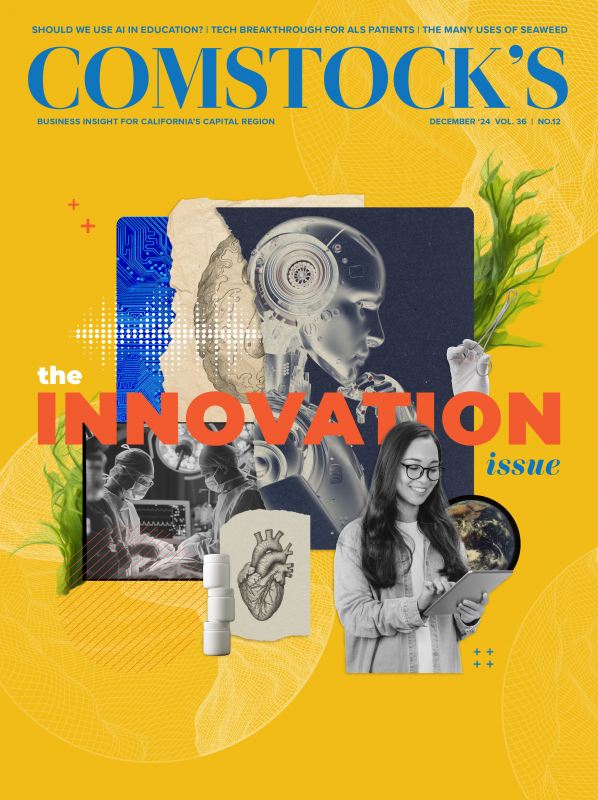Native Americans are winning back a bit of their own: the California economy. Let me explain. When I heard the news about the Sacramento Republic FC ownership change — with Wilton Rancheria, a federally recognized Miwok tribe in Sacramento County, becoming majority owner (while Kevin Nagle maintains his managing partner role) — I joined the entire Capital Region in celebrating what this would mean for Major League Soccer, as well as for the continuing (and delightful) growth of professional sports here.
But I also saw an inspiring comeback story on the part of our local tribes. They’re beginning to reclaim quite a bit of land they once owned themselves through the purchase power they now have. The Shingle Springs Band of Miwok Indians (Red Hawk Casino’s owners) used to own the very land where that “hole in the ground” at 3rd and Capitol Mall sits — and now they’ve bought it back. We haven’t heard what they’re going to do with it yet, but they will likely build on it one day, and likely build something that will commemorate their ancestors who used to live, farm and raise their families there.
In addition, a portion of the Railyards land, apparently once
owned by Wilton Rancheria, is back with its original title
holders, thanks to this new majority ownership of the Republic FC
and the stadium property.
I’m wondering if maybe, just maybe, there are more stories like
this to tell, since we have other tribes and tribe-owned casinos
in the area, including the Berry Creek Rancheria of Tyme Maidu
Indians of California, who own the Gold Country Casino in
Oroville; the Yocha Dehe Wintun Nation, who own Cache Creek
Casino Resort in Yolo County and its many amenities (a golf
course, hotel and spa, as well as Séka Hills, an agricultural
operation in Capay Valley that grows a variety of crops and
raises cattle; and they also just opened a tasting room on R
Street where they have many specialty olive oils and vinegars);
the Shingle Springs Band of Miwok Indians, who own Red Hawk
Casino; the Jackson Rancheria Band of Miwuk Indians, who own
Jackson Rancheria; the United Auburn Indian Community, who own
Thunder Valley Casino Resort; the Campo Kumeyaay Nation, who own
Golden Acorn Casino and Travel Center in Acampo; and others.
Many decades ago, fairly fresh out of school, I worked for a dozen or so years in the state legislature. I worked largely in the speaker’s office and remember well the hard fighting that took place to get California to a point where we’d allow gaming in our state. Even then, it had already been discussed for decades, and the needle wasn’t being moved much at all. “No gaming in California” seemed to be the mantra. Since then, of course, the lottery has come into being and has changed everything — gaming has become a staple.
None of us alive today experienced the unfortunate history that took place a couple hundred years ago in the wild, wild West. Despite that, history has not been wholly forgotten, and the state has been able to grant Native tribes gaming rights, established on sovereign-nation land all around us, so the tribes could build their casinos and create a very large revenue source for themselves and their future generations. Although many of us still go to Reno or Las Vegas for gambling, a majority of our community members frequent the casinos and spend millions of dollars feeding the gaming-industry machine. With that money, the tribes have been able to accumulate wealth and investment capital, and they are buying back some of their original land — their ancestral land.
While what was lost can never truly be restored, it just seems like it’s come full circle in many ways. All we can do is make the best choices we can in the time that we’re given, and I believe our local tribes have done that honorably — investing in our community with health centers, now a sports franchise, major entertainment venues, hotels, restaurant offerings, golf courses, spas, go-cart racing tracks, family entertainment centers and more. The tribes have exercised great business sense in many ways, and they’ve been extremely generous to many of our region’s nonprofit organizations. Hard Rock Hotel & Casino in Wheatland, owned by the Enterprise Rancheria tribe, has donated $350 million to nonprofits and $1 million to Sutter Health. And I just have to comment on Wilton Rancheria, who fully converted a deserted regional ghost mall property in Elk Grove that was an eyesore into a spectacular casino called Sky River. This is the tribe who purchased majority ownership in the Republic FC.
The turn-around, or comeback, whatever we want to call it, is noteworthy and ironic in a good way. But any way you look at it, it’s a great California success story. Your thoughts?
Winnie Comstock-Carlson
President and Publisher
–
Stay up to date on business in the Capital Region: Subscribe to the Comstock’s newsletter today.
Recommended For You

Regaining Lost Land
FROM THE PUBLISHER: When I heard the news about the Sacramento Republic FC ownership change — with Wilton Rancheria, a federally recognized Miwok tribe in Sacramento County, becoming majority owner (while Kevin Nagle maintains his managing partner role) — I joined the entire Capital Region in celebrating what this would mean for Major League Soccer, as well as for the continuing (and delightful) growth of professional sports here.

The First Rule of Art Is to Enjoy It
FROM THE PUBLISHER: I’ve always loved art, in every form I can think of: music, dance, painting, sculpture, film, theater, literature, architecture and even conceptual. After all, art is about taste, memory, the senses — and just as often, can be about political preference, sexual orientation and religious affiliation. In short, art is highly personal.

We Oughta Be in Pictures!!
FROM THE PUBLISHER: Our region has long been one of Hollywood’s well-known secrets. Because of the area’s natural beauty and close to year-round clement weather (the two compelling reasons that made filmmakers leave New York in the early 1920s for a stronghold in Southern California), movies, TV shows and commercials have been shot here for years. What if we had our own film studio?

Some Important Bedfellows: Financial Literacy, Art, Reading and Writing
Comstock’s President and Publisher Winnie Comstock-Carlson examines the shortcomings of California’s public school system.

The Marvel of Milestones
Comstock’s President and Publisher Winnie Comstock-Carlson reflects on 35 years since launching the iconic Capital Region magazine.

The Timeless Value of Associations
Comstock’s President and Publisher Winnie Comstock-Carlson explores the perks of being part of a trade association — and why there are so many in Sacramento.





